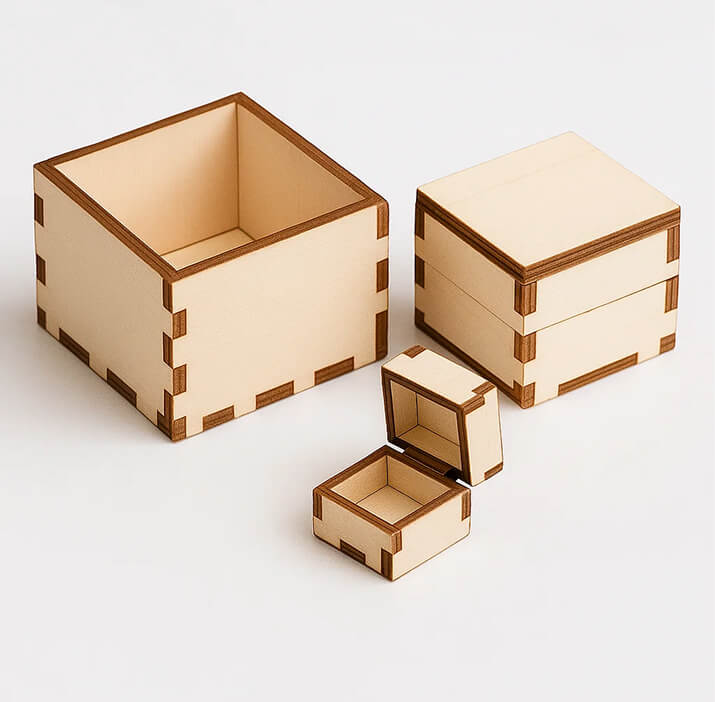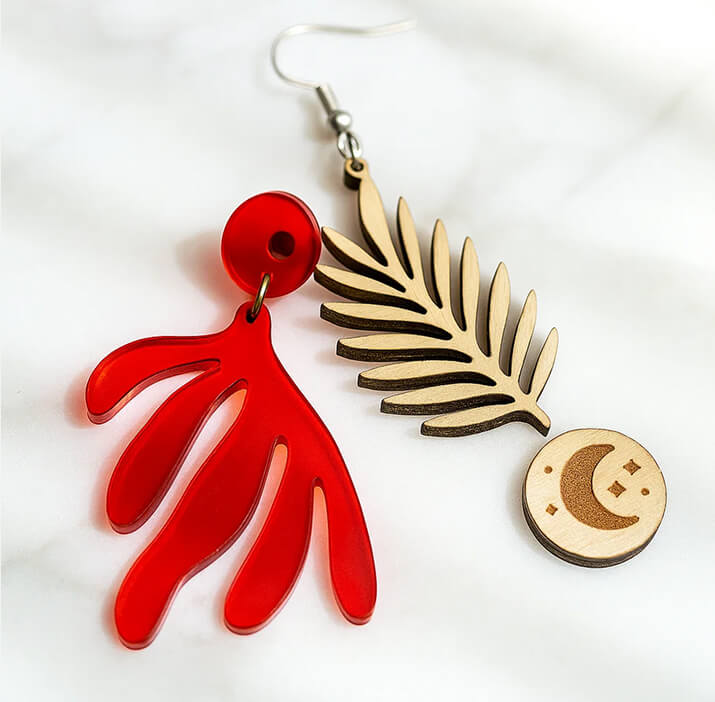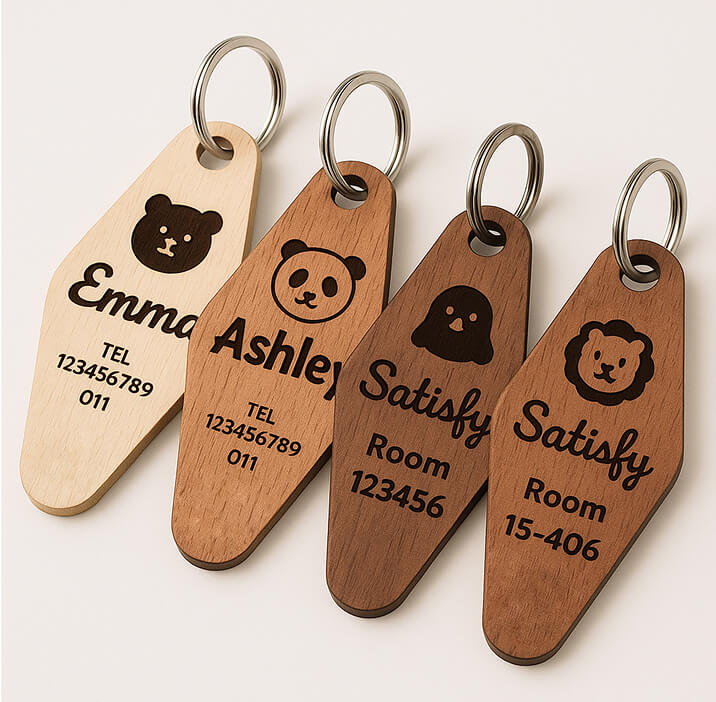![[Laser cut and engrave] Week 2 Task - Lotus Scene Mirror Frame](https://image-res.xtool.com/ali-res/community/making/06d497ca-1482-497e-93e9-bb23c43f9f42.png?x-oss-process=image/resize,w_1200,h_900,limit_0/interlace,1/format,webp/auto-orient,1)
Week 2 Task - Lotus Scene Mirror Frame

Information
I often wish that I have some kind of mirror by my door, so I am able to take a quick glance at myself and make sure that I look presentable before opening the door. But I would want the mirror to be a decorative piece, rather than just a mirror.
Here is a round craft mirror I found at Hobby Lobby, I incorporate a lotus flower scene into the design, and now I will feel confident to greet whoever is at my door.
And hope this project will inspire you to create one for your doorway.
Instruction
Step1
Idea Forming:
To me, for any project, this is the most important step. The more clear about what you like to create, the easier it is to figure out how. So do spend time to think it through and form your idea as clearly as possible.
So, what would I like to create this time????
I know that I want a mirror by the doorway, and I know that I don't want it just a mirror, but rather a piece of artwork with a mirror in it.
And due to the size constraint of my M1, I decided that 10x10" probably is a good finished size. For the mirror, as long as the size is large enough for the face, that should be sufficient enough. With all these in mind, just a matter of finding the right mirror and deciding on the design.
These Hobby Lobby mirrors are really good quality, and inexpensive, I decided that either 6" or 7" round would work for what I have in mind.

Step2
Idea Sketching:
Since I decided on the round mirror, a round frame will make more sense, so it is time to put the idea into drawing, I like to use Procreate app on the iPad. Here is the process:
- Basic Frame, I am putting the mirror off to the side a little, it not only creates an interesting look but also leaves extra room for me to play with some decorative elements.
- I decided to incorporate the lotus flower into my design, I went ahead and sketch out a full bloom flower, a bud, and a leaf
- I then added some water ripples on the bottom left, that help to anchor all the elements and create some movement to the look
- I also added a piece of cloud in the sky to complete the lotus pond scene

This process creates a clear end result and gives me a clear idea of how to approach and make it into reality.
Step3
Creating the design file:
First Step: Prepare and Vectorize the design
There are a few different ways to incorporate the designs onto the project. And this is a personal choice, there is no right or wrong, just what do you prefer. You can:
- Engraving
- Cut the design out and glue them on top of the layer
- Inlaying
- Make a Cutout of the design from the layer itself
I personally prefer the #4 method, cutting out the designs from the layer.
In this case, the design needs to be modified and prepared as making a stencil, so I went ahead and disconnect some of the outlines in the drawing (examples are shown with pink arrows in the diagram below), This way, all the background pieces are connected after the design outlines are cut out. 
Then, the next thing is to vectorize the drawing
(There are many tools to do the vectorization, I typically use my familiar software Silhouette Studio.
With its "Trace Tool", trace the drawing, after deleting the original, you are left with the vectorized version of the design.


I always take advantage of the full spectrum color-fill feature of the software, it gives me a better visual for double checking my result, if any imperfections, usually I am able to fix them with the "Point Editing Tool".
Second Step: Frame Layers Creating
Layer One: Base Frame
Draw a large circle with the final frame size
Draw a small circle of the mirror size, and place it toward the left
Draw two tiny circles, for the hanging holes (I am thinking to use ribbon to hang my mirror))
Select all circles, use "Subtract", and cut out 3 circles from the large frame circle to create the frame base
 After placing and arranging the vectorized design on the basic frame, I ended up having to modify the size.
After placing and arranging the vectorized design on the basic frame, I ended up having to modify the size.
If a 7" mirror is used, to have all the elements ratio looks nice, the outer frame size will endep larger than 10", so I decided to use the 6" mirror instead, and the new frame size is 8.75" round.
And also part of the design ended up overhanging the base a little. In order to incorporate that into the base, I create an offset by 0.075" of the overhang elements.
 Merge the offset with the original base, and create a modified base frame
Merge the offset with the original base, and create a modified base frame

The top layer of the frame is done.

Layer Two: Mirror Holding Layer
This is the layer with a hole 0.05 ~ 0.075" larger than the size of the mirror, which not only helps to keep the mirror in place but combined with Layer One also creates a Matting effect look.
**This layer can be omitted, if you choose this way, then the hole in Layer One should be 0.05 ~ 0.075 larger than the size of the mirror**
Layer Three: Mirror Layer
This is a layer with the mirror-size circle cut out, it would hold the mirror in place. You can duplicate it from Layer One, just make sure that the hole is a perfect round, otherwise, your mirror is not going to fit.

Layer Four: Backing Layer
This is just a solid layer with the same outline as the frame. You can use any of the layers, perform a "Release Compound Path" to break all elements into individual pieces, and go ahead and delete all but the outline, which is the Backing layer.

**As an afterthought, I felt that a single piece of the cloud looks kind of lonely in the sky, so I decided to add a "Moon" to the design.**
Here are my final design files

**And here is what is going to look like after it is done.**

Now go ahead and save everything to SVG format, and it is ready for laser cutting.
Step4
Layer Cutting & Coloring:
Open "xTool Creative Space", connect to your machine (I use M1), turn on appropriate accessories, such as air assist, and air purifier, then upload the SVG design file and place the material into the M1, with the setting of 100/4/1 for cutting 1.5mm basswood works well for me. The cuts are very straightforward.
Except for Layer One, I cut out the moon first, and flip it over, I like the unpainted light wood color for the moon, but you can pick it up and paint whatever color you like, then put it back, and proceed with the rest of the cutting.
Here are a few more tips:
**If you plan to color or stain the project, I find that it is easier to do it before the cutting, especially Layer One, as there are some delicate areas, and it will be hard to color afterward. But of course, the choice is all yours**
**Only the front side of Layer One and the back side of Layer Four need to be painted.**
**Layer Two can be painted if you want the color to show through the cutout of Layer One**
**If you paint Layer Four in advance, make sure you mirror the image, then cut. so the color will be on the backside.**
**Layer One & Layer Two**

**Layer Three**

Step5
Assembly:
I always do a dry fit before the actual gluing process.
After you confirm that everything looks fine, go ahead glue all the layers together by their order, and attach your preferred string for the hanger.
And here you are:












